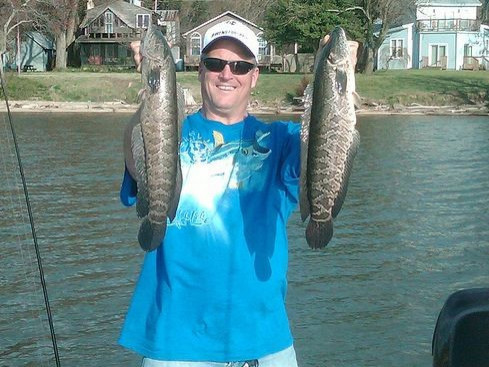Snakehead Bounty Maryland: Capture the 'Fish from Hell,' Win a Prize

Maryland officials have put a bounty on the snakehead, also know as the fish from hell, in an aim to save eco-systems from being devastated.
The state will be giving out $200 gift cards for Bass Pro Shops and other prizes for catching and killing the fish, which is native to Africa and Asia.
We do not want snakeheads in our waters, said Don Cosden from the Maryland Department of Natural Resources. This initiative is a way to remind anglers that it is important to catch and remove this invasive species of fish.
The Snakehead, which has been dubbed fishzilla by National Geographic, can migrate a quarter of a mile between different pools of water and can survive on land for up to four days.
In Maryland the fish was first spotted in 2002, when an angler caught an 18-inch one at Crofton Pond. Since then, the population has grown considerably and the snakehead has been caught in at least seven states across the U.S.
We don't expect that anglers will eradicate the snakehead population, Joe Love, the state's Department of Natural Resources Tidal Bass program manager told blippitt.com. We do believe this promotion and inspiration of anglers can help control the snakehead population. The information we gain from the Angler's Log reports are also helpful in assessing the abundance, spread and impact of these feisty fish.
Conditions to Win Prize
Angler's need to catch, kill and then post a picture of themselves with the dead snakehead to be eligible for the bounty. The winners will be drawn on Nov.30 this year.
A recent catch was made by Steve Kelley, a recreational Angler who caught and killed two fish in March. He uploaded his photographs on the Department of Natural Resources Website.
I started slow, but finished with a bang and equaled my last trip, 14 bass, including a 21 ½ fatty, a 18 ½ bass, and two 17 fat bass, and three yellow perch. Steve landed 10 bass, including his biggest Potomac largemouth to date on his first cast, and a four pounder, along with two yellow perch, a white perch, and two fishzilla snakeheads (dead with the gills ripped out, probably filleted last night by Mr. Kelley), Kelly said in a BlogSpot.
Another two snakeheads were caught by Jake Dull on the main river outside of Belmont Bay; both fish were eaten in the form of Sushi, according to the recreational angler who uploaded pictures on a blog.
Snakehead Fish: The Facts
- As a family, snakeheads are native to parts of Asia and Africa. The northern snakehead is native to China, and possibly Korea and Russia.
- Typically found in a wide variety of habitats
- Northern snakeheads grow to a maximum length of about 33 inches.
- Generally tan in appearance, with dark brown mottling; body somewhat elongated; long dorsal fin; jaws contain numerous canine -like teeth (similar to pike or pickerel)
- Capable of breathing air using an air bladder that works as a primitive lung (not found in most fish)
- Able to hibernate in cracks and crevices during cold temperatures and to go dormant in the mud during droughts
- Voracious top-level predator, eating mostly fish, but also eats other aquatic wildlife and frogs
- Capable of moving short distances on land using its pectoral fins; can live out of water for as many as three days
- Favored as a food fish throughout southeast Asia; also believed to have curative powers. Also sold in the aquarium trade.
- Four species have been found in the U.S., in eight states, probably the result of releases from personal aquariums or to develop local food sources
- No natural predators in the U.S.
© Copyright IBTimes 2025. All rights reserved.





















